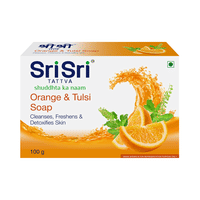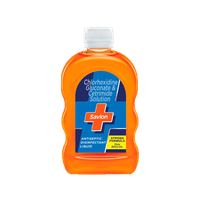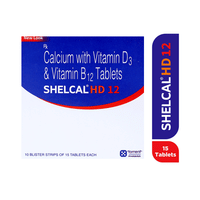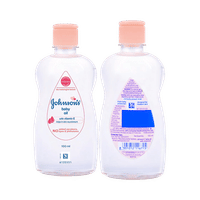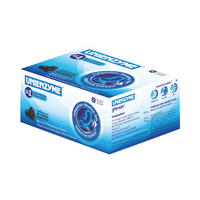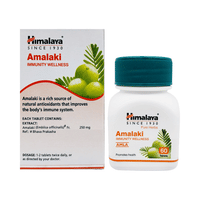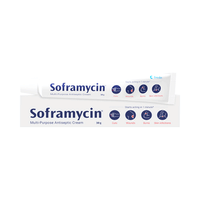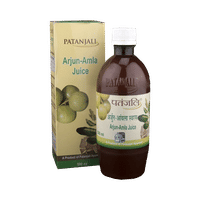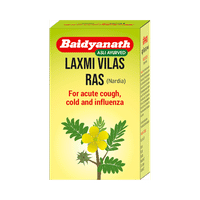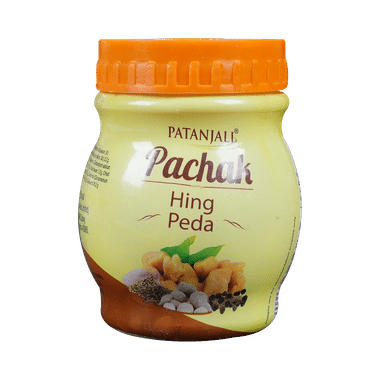
Patanjali Ayurveda Pachak Hing Peda is a specially crafted product made from high-quality hing (asafoetida) and a blend of essential herbs and spices. It plays a crucial role in supporting and maintaining a healthy digestive system by addressing common concerns like gas, acidity, and more. This unique formulation acts as a digestive stimulant, promoting the activation of enzymes and stimulating the appetite. Pachak Hing Peda's digestive benefits make it a suitable remedy for issues such as gas, flatulence, nausea, and various other gastric discomforts. It serves as a natural and effective solution to enhance overall digestive well-being.
Key Ingredients:
- Chini (saccharum officinarum , st.) 54.5 gm
- Anardana (punica grantum, sd.) 2.2 gm
- Amchur (mangifera indica, dr.Fr.) 5.7 gm
- Jeera (cuminum cyminum, sd.) 2.2 gm
- Samudra lavan 2.2 gm
- Dhaniya (coriandrum sativum, sd.) 1.8 gm
- Kala lavan 1.3 gm
- Kali mirch (piper nigrum, fr.) 1.5 gm
- Dalchini (cinnamomum zeylanicum, bk.) 0.2 gm
- Badi elaichi (amomum subulatum, fr.) 0.2 gm
- Sendha lavan 1.8 gm
- Chhoti pipal (piper longum, rt.) 0.8 gm
- Hing (ferula foetida, exudate) 0.3 gm
- Saunf (foeniculum vulgare, sd.) 0.5 gm
- Gulkand 24.2 gm
- Extract of neembu (citrus medica, fr.) 1.1 gm
Indications:
Useful in pachak, ruchikar, vatanulomak disorders
Key Benefits:
- Digestive support: It helps maintain a healthy digestive system and effectively manages common concerns such as gas, acidity, and other digestive discomforts
- Digestive stimulant: Acts as a digestive stimulant, promoting the activation of enzymes and stimulating the appetite
- Relief from gastric distress: Provides relief from gas, flatulence, nausea, and various gastric distresses
- Natural and effective: Offers a natural and effective solution for digestive well-being, promoting overall digestive health
Dosage:
Take 5 gm-10 gm twice in a day or as directed by the physician.
Safety Information
- Read the label carefully before use
- Store in a cool and dry place, away from sunlight
- Keep out of reach of children
- Don’t exceed the recommended dosage
- Avoid any strong smell in the mouth, such as coffee, onion, hing, mint, camphor, garlic etc., while taking medicine
- Avoid eating tobacco or drinking alcohol during the course
- Should not be used by diabetic and hing (asafoetida) - sensitive patients
Frequently Asked Questions:
What is ayurvedic medicine?
Ayurvedic medicine is a traditional system of medicine that originated in India over 3,000 years ago. It emphasises a holistic approach to healthcare, focusing on the balance of mind, body, and spirit to promote overall well-being.
How does ayurvedic medicine work?
Ayurvedic medicine is based on the principle of balancing the three doshas (vata, pitta, and kapha) to maintain health. Treatments may include herbal remedies, dietary adjustments, yoga, meditation, and lifestyle changes to restore this balance.
How long does it take to see results with ayurvedic medicine?
The time it takes to see results varies depending on the individual, their condition, and the concern. Some may experience improvement quickly, while others require more time and consistent practice.













